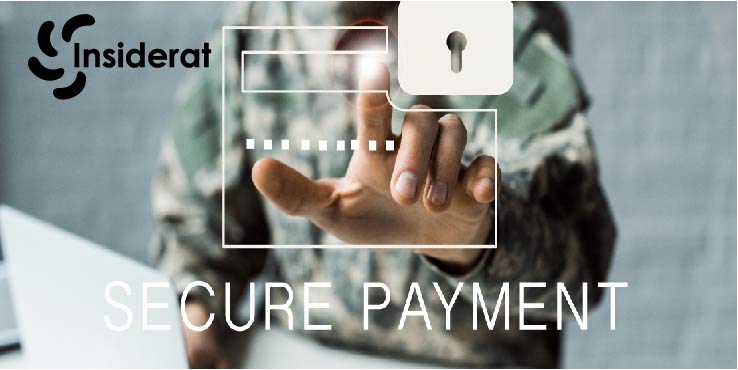which forms of payment is linked to a bank account which limits the amount of money you can spend to balance in your account?
Welcome to Insiderat! In this post we inform you which forms of payment are linked to a bank account – As we delve into the complex world of digital finance, one particular area that consistently garners attention is the variety of payment methods linked to bank accounts. These offer secure bank account transactions that fuel seamless financial operations in a rapidly evolving digital economy.
The Role of Electronic Transfers in Modern Banking
As our economy continues to shift towards digital operations, electronic transfers have emerged as a leading pillar in modern banking solutions. Serving as a gateway for a multitude of online financial transactions, these transfers are typically facilitated through Electronic Funds Transfer (EFT) and Automated Clearing House (ACH) transfers.
Central to the success of electronic transfers is the efficiency they bring to the financial landscape. Speed is an unquestionable advantage here, with transactions being processed faster than traditional methods and providing almost real-time financial updates. Moreover, the security they provide has made them the go-to choice for individuals and businesses alike.
But how exactly do these electronic transfers work? Through the process of bank account linking, funds can be transferred electronically from one account to another without the hassles associated with manual transactions. This has paved the way for businesses to receive payments promptly and individuals to transfer money easily, making financial transactions smoother than ever.
While the EFT system is largely used for transactions within the confines of a country, ACH transfers provide an inexpensive solution for money transfers across different countries. Both systems, however, have streamlined the way we perform our financial transactions online, thus reinforcing their pivotal role in the evolution of modern banking.
As we strive to simplify our financial lives, electronic transfers prove to be a game changer. Bridging the gap between financial institutions and consumers, these modern banking solutions continue to revolutionize the way we perceive and manage our financial transactions, reinforcing their essential function within the changing dynamics of the banking ecosystem.
Which Forms of Payment Is Linked to a Bank Account
As we delve into the digital age, consumers increasingly gravitate towards seamless bank-linked payment options. Digital wallets, offering the epitome of financial integration, have quickly become indispensable. Streamlining payment processing, these wallets use direct links to bank accounts, melding convenience, and security in online transactions.
Take, for example, companies like PayPal and Apple Pay. They have strategically positioned themselves as leaders in the realm of digital wallets. Their approach to secure online payments has not only resonated with consumers’ need for convenience but also fostered trust, embracing their pivotal role in the financial landscape.
Let’s dive deeper into how digital wallets entered the financial industry and revolutionized how we manage money:
| Company | Description | How it Uses Bank-Linked Payment Options |
|---|---|---|
| PayPal | An American company operating an online payment system in the majority of countries that support online money transfers. | PayPal enables users to add bank accounts and utilize them as a source for funding transactions. Payments can either be instant with a linked debit or credit card, or “eCheck,” which takes several days to clear from a linked checking account. |
| Apple Pay | Apple’s mobile payment and digital wallet service lets users make payments using an iPhone, Apple Watch, or on the web. | Users with a supported Apple device can add a debit or credit card – linked to their bank account – to their virtual wallet and make secure purchases in stores, in apps, and on the web. |
From the table above, it’s clear digital wallets like PayPal and Apple Pay have innovated the landscape of secure online payments and financial integration. The power of bank-linked payment options is reshaping the world of transactions, facilitating secure and efficient payment processing for the digital age. Whether purchasing online or sending money across the globe, the choice of linked payment methods has made financial management easier than ever before.
Conclusion
Our exploration of the various forms of payment that are directly linked to a bank account reflects the intricate and robust nature of today’s financial ecosystems. As we’ve observed, options such as direct debits, electronic transfers, and digital wallets offer reliable payment solutions that render transactions both convenient and secure.
The widespread utilization of these bank-linked systems signifies a major paradigm shift in how we manage our finances. By optimizing transactions through automatic payments and electronic transfers, we’re able to streamline our financial obligations, hence facilitating improved financial management.
To summarize, it is evident that the forms of payment linked to a bank account are not just mere elements of modern banking, but are in fact critical cogs in the efficient functioning of our financial lives. The bank-linked payments summary presented in this article illustrates the indispensable role these methods play in enabling secure, efficient, and hassle-free transactions.
As we move forward into an increasingly digital era, the significance of these bank-linked payment options cannot be overstated. Their integration into our personal and business banking solutions has made them vital components of our day-to-day financial operations, testament to their reliability and efficiency.
#which forms of payment is linked to a bank account which limits the amount of money you can spend to balance in your account?

